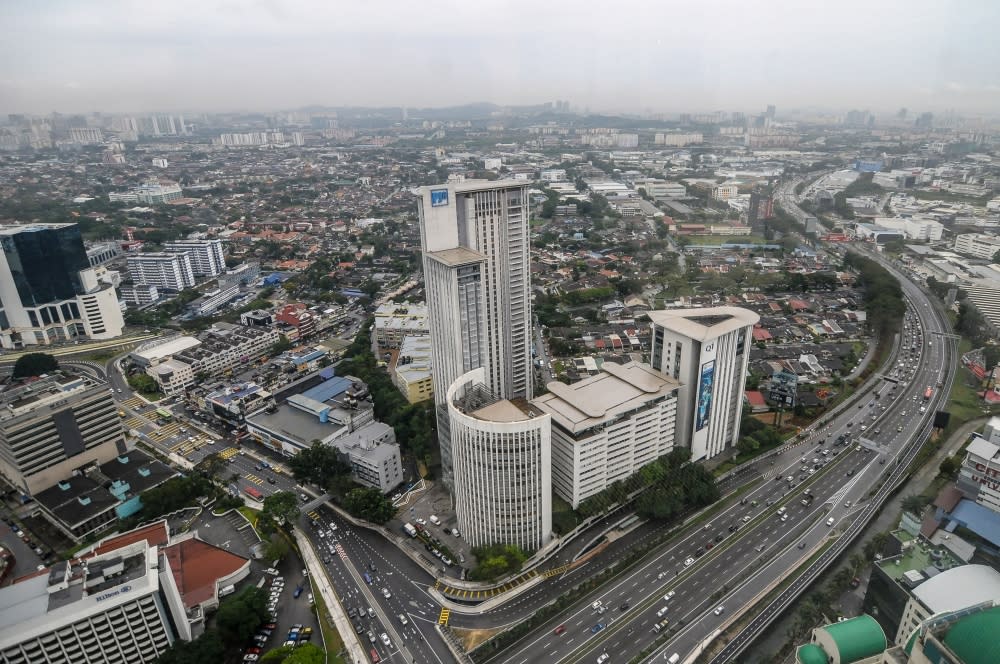Malaysian property market shrinks 5.7pc in Q1 on interest rate hikes, falling confidence

KUALA LUMPUR, May 15 — Malaysian property transactions fell in the first quarter compared to last year, with construction activity also slowing down across the same period, Valuation and Property Services Department director-general Abdul Razak Yusak said today.
Based on the National Property Information Centre’s (Napic) data, Abdul Razak said there was a 5.7 per cent decrease in the market activity compared to Q1 2022.
“More than 89,000 transactions worth RM42.31 billion were recorded in Q1 2023, showing a 5.7 per cent decrease in market activity compared to Q1 2022 but the total transaction value increased slightly by 0.8 per cent.
“The decrease in activity in the residential and agricultural property sub-sectors at a rate of 6.6 per cent and 12.5 per cent respectively compared to last year affected the performance of the overall property market.
“The increased activity in the commercial and development land subsectors, which increased by 14.5 per cent and 2.8 per cent in volume and 22.1 per cent and 30.4 per cent in value respectively offset the overall decline,” he said.
He said factors such as a seasonal slow period for property transaction at the start of the year, increases in the Overnight Policy Rate (OPR), and an 9.7-point year-on-year decline of the Consumer Sentiment Index in the first quarter were among reasons for the drop in transactions.
Developers have also adopted a cautious outlook, he said to explain the slowdown in activity.
“The number of completed, started and newly planned units decreased by 25.4 per cent, 14.5 per cent and 22.6 per cent respectively compared to the first quarter of last year.
“The serviced apartment sector also experienced a decline in construction activity, with a decrease of 60.3 per cent, 51.8 per cent and 58.8 per cent for completed, started and planned units, respectively,” he said.
Abdul Razak also said the number of new residential launches recorded of nearly 4,700 units was lower than in previous years, but said this would help address overhang.
According to Napic’s data, Johor had the most new units launched at 2,077, accounting for approximately 45 per cent of the total nationwide. However, sales performance was moderate at 24.9 per cent.
Selangor was next with 791 units, accounting for 17 per cent of the total, and its sales performance was relatively better at 37 per cent.
“The reduction in new launches corresponds to a decrease in the number of licenses granted to developers, as well as advertising and sales permits for new housing sales and renewals approved by the Ministry of Development and Local Government,” he said.
The number of approved permits decreased from 5,641 in January and February 2022 to 2,911 in the same period in 2023.
He said that the residential and serviced apartment overhang status continued to be positive as the volume and value of residential overhang decreased by 3.2 per cent and 0.5 per cent respectively compared to the fourth quarter (Q4) of 2022.
The serviced apartment segment also saw a marginal decline in the number and value of overhang units by 3 per cent each to 23,267 units valued at RM19.59 billion.
Abdul Razak said that the Malaysian House Price Index stood at 210.1 points (RM453,365 per unit) in Q1 2023, with a marginal annual growth of 2.0 per cent.
“The growth ranging from 0.4 per cent to 5.8 per cent, which was recorded in all states except Sarawak, has stabilised the overall house price index. This annual growth was almost like the pre-pandemic growth,” he said.
He also said that the occupancy of private purpose-built offices and shopping complex has increased marginally.
In Q1 2023, private purpose-built offices had an occupancy rate of 71.9 per cent, marginally higher than in Q4 2022 while the amount of unoccupied office space remained high at 5.17 million square metres.
Kuala Lumpur had the highest available space of 2.53 million square metres, followed by Selangor with 1.40 million square metres.
In the shopping complex segment, the occupancy rate marginally increased to 76 per cent in Q1 2023, while the total unoccupied retail space was approximately 4.2 million square metres.
“The private purpose-built office and shopping complex segment in Kuala Lumpur and Selangor should be given attention as there is a surplus of space, which is expected to be severely affected by the inflow of new supply this year.
“Both parties, namely developers, need to be more thorough and cautious before planning any new developments while the local authorities need to evaluate in detail before approving each new project,” he said.
Besides, the gradual increase in the OPR since May 2022 is expected to have an impact on property market activity, particularly on residential demand.
He said that looking at the national economy which is projected to grow by 4.0 per cent to 5.0 per cent this year supported by continued resilient domestic growth prospects, the property market is expected to remain cautiously optimistic in 2023.



